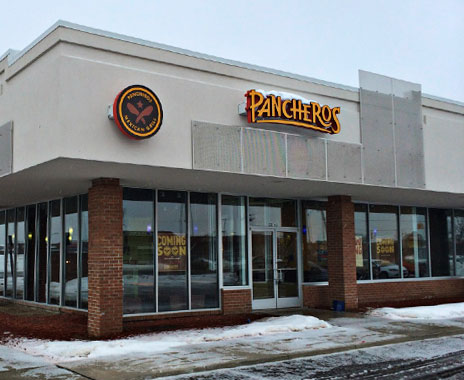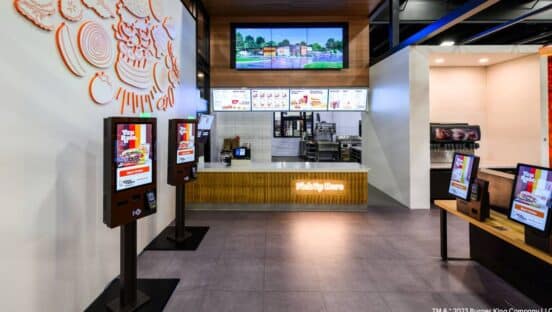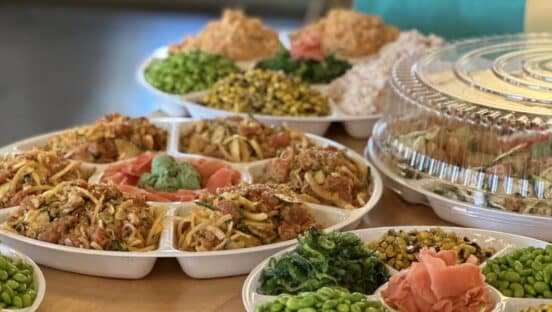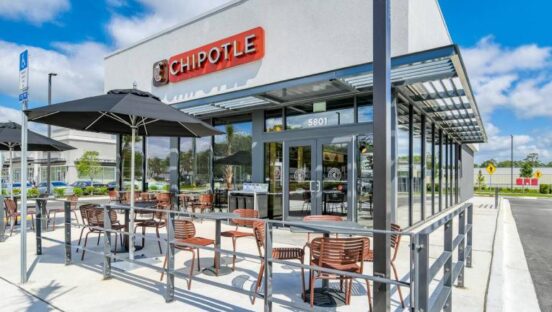As winter storms continue to wreak havoc in the Midwest, Northeast, and Southeast U.S., a bleak sales picture among limited-service restaurants is starting to emerge.
Foodservice sales in the regions most affected by snow and ice storms dropped between 7 and 8 percent in January and February, according to foodservice consulting firm Technomic. National foodservice sales declined between 3 and 4 percent overall as a result.
“Consumers across two-thirds of the country have been reluctant or unable to leave their homes for the better part of two months,” Wade Hanson, a principal at Technomic, said in a release. “We expect that consumers will enthusiastically return to foodservice in the spring, but January and February have to be considered lost dining occasions for foodservice operators.”
Restaurant operators across the country feel the same way. Fifty-three percent of operators in New England and 49 percent in Mid-Atlantic states say the weather had a negative impact on their businesses in the first two months of the year, according to Technomic.
While Atlanta was subjected to less snow than other parts of the country, the city was ill prepared to handle two storms that crossed the Southeast in January and February, and the citywide shutdown that ensued forced the doors of several quick-serve concepts to close.
“It has been devastating,” says Mark Kaplan, chairman of the 75-unit, Atlanta-based Great Wraps. “In Atlanta, we missed four days, and we have stores all over the Northeast, which was hammered this winter.”
Great Wraps’ Atlanta stores had to close for two days at a time during each of the two ice storms. “For stores that are paying large, fixed expenses such as rent and salary, to be closed for two or three days is devastating,” Kaplan says. One- or two-unit franchisees often realize the most impact from store closures, he adds.
Tin Drum Asiacafé, also based in Atlanta, had to close all six of its restaurants in the area for four total days during the ice storms, resulting in around $20,000 in lost sales. Still, executives’ top priority was making sure managers and crew stayed safe during the storms.
“Getting them home early enough to try to minimize the risks, as well as the decision to close or stay closed, [were priorities],” says Amy McQuiston, manager of administration for Tin Drum. “We would not jeopardize safety to make a few potential dollars in sales.”
It’s not just closed stores putting a damper on sales. Consumers have also not been as able or willing to go out to eat this winter. Sixty percent of consumers surveyed by Technomic said the weather has been a drag on their normal activities, including going out to eat. That was especially true on the East Coast; some 82 percent of New Englanders and 76 percent of those in the Mid-Atlantic say the weather affected their normal activities.
Consumer transaction technology firm NCR also found that 43 percent of Americans dined out less often in February because of the weather.
With more than half of its restaurants in the Midwest and Northeast, Coralville, Iowa–based Pancheros Mexican Grill suffered losses from store closings and reduced traffic. Three of its restaurants were forced to close due to storms, including one of its highest-volume units, in Ann Arbor, Michigan, which shut down for two weeks because of a water main break that affected numerous businesses in the area.
“While Pancheros was still able to maintain positive sales growth overall, we did notice lower restaurant growth compared to previous years,” says Rodney Anderson, founder of Pancheros, which operates 65 units.
Still, Pancheros executives reduced operational costs during the storms by managing labor on a shift-by-shift basis and reducing labor during “unexpectedly slow periods” like severe weather, Anderson says. “As much as possible, we remained sensitive to controlled costs, such as food and labor, during these months.”
Pancheros also takes preventative measures through store build-out and upkeep, like properly maintaining its heaters and investing in fixtures such as double-paned windows for stores in areas with the coldest temperatures. “We also programmed thermostats accordingly and closely monitored water flow from faucets as an indicator of pipe problems,” Anderson says.
While Atlanta-based Fresh to Order realized a drop in traffic during the snowstorms and also closed Atlanta-area locations, sales have evened out since the storms.
“The week following the storms, we had record sales weeks for certain stores. When you average it all out, it is where we are supposed to be [for this time of the year],” says Jesse Gideon, chief operating officer of Fresh To Order.
Instead of significantly affecting store traffic, the storms had a greater impact on deliveries of perishables and dry packaged goods, Gideon says. “Several weeks later, some items with our logo, such as bags and cups, are behind on deliveries,” he says.












